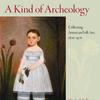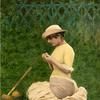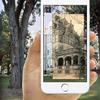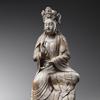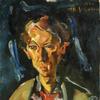The Noguchi Museum and The Brother In Elysium Announce New Publication "I Become a Nisei"
- NEW YORK, New York
- /
- June 25, 2020
The Noguchi Museum and The Brother In Elysium, a publishing imprint and studio run by artist Jon Beacham, announce a new limited-edition artist’s book, I Become a Nisei. This handmade publication collects an essay by Isamu Noguchi written from a prison camp for Japanese Americans in 1942, along with eight color plates featuring related artworks and documents from The Noguchi Museum Archives. Brian Niiya, Content Director at Densho, contributed a foreword.
The publication is printed letterpress from hand-set type, and was bound by hand in an edition of 300 copies. It is available from shop.noguchi.org and thebrotherinelysium.com.
Following the Japanese attack on Pearl Harbor on December 7, 1941, Isamu Noguchi advocated in various ways on behalf of the patriotism and civil rights of Japanese Americans, a community with which he had previously had little contact, but “of whom because of war I had suddenly become a part.” (I Become a Nisei). In early 1942, with Larry Tajiri of the Pacific Citizen, Shuji Fujii of Doho, and others, he cofounded the Nisei Writers and Artists Mobilization for Democracy and attended hearings on the removal of Japanese Americans from the West Coast led by California Representative John Tolan of the House Select Committee Investigating National Defense Migration.
In April 1942, Franklin D. Roosevelt’s signing of Executive Order 9066 made the forced relocation of Japanese Americans on the West Coast a shocking reality. Noguchi traveled to Washington D.C. and met with officials in an attempt to use his position as a well-known artist to draw attention to the relocation policies. In an extraordinarily idealistic scheme conceived with John Collier, Commissioner of the Bureau of Indian Affairs, Noguchi voluntarily entered the Colorado River Relocation Center in Poston, Arizona, in May 1942, with plans to design the camp as a model community with parks, exemplary facilities, and arts and crafts programs, where a self-determined Japanese American cultural expression might flourish in a new context.
What he encountered was, of course, quite a different scenario. Not only were the conditions extremely harsh, with intense heat, sandstorms, and unfinished barracks with few available resources, but none of his plans for facilities or programming were supported. To the camp leadership he was a prisoner like any other, and to most of the other prisoners, he was highly suspect due to his celebrity status.
From this place of alienation, he responded to a request from DeWitt Wallace of Reader’s Digest for an article on the situation with a complex and moving piece which went unpublished at the time. The text intertwines observations on the daily realities of the camps with personal reflections on cultural identity and community, and with formative articulations of visions and conflicts that would resonate in his later work.
At the heart of the essay, Noguchi questions what the democracy of the American government stands for, and if it will come out on the other side of the War to meet Japanese Americans as its rhetoric preached. The piece offers an intimate portrait of an artist’s complex awakening and shines some light on an underrepresented narrative of the fight against fascism during the War, and American fascism on its own land.
The text in this edition of I Become a Nisei is derived from one of two extant typescripts which can be found online in The Noguchi Museum Archives along with many other documents related to Noguchi’s activism and time in Poston. The manuscript was also highlighted in The Noguchi Museum’s 2017 exhibition Self-Interned: Noguchi in Poston War Relocation Center, and was included as an appendix in Amy Lyford’s Isamu Noguchi’s Modernism (UC Press, 2013). This is the first book with the essay as its centerpiece.
Specifications
Text written by Isamu Noguchi
Foreword by Brian Niiya
Published by The Brother In Elysium / The Isamu Noguchi Foundation and Garden Museum, 2020
Typesetting, letterpress printing, and binding
by Jon Beacham. Book design by Jon Beacham
and Amelia Grohman.
Softcover with letterpress dustjacket.
32 pages, 6 x 8 3/4 in. $40
The Brother In Elysium
Multidisciplinary artist and publisher Jon Beacham (b. 1979, Cleveland) of The Brother In Elysium carries on the disappearing craft of letterpress typesetting with metal foundry type, with a belief in the form of the book as a primary venue for communication and possibility. Incorporating photography, bookselling, collage, and 16mm film, his practice emphasizes collaborative friendships, sense of place, hand labor and workmanship as a style for living. He has also curated and hosted numerous exhibitions, performances, and film programs, operating from various locations in New York and elsewhere. thebrotherinelysium.com | @brotherinelysium
Densho
Taking its name from a Japanese term meaning “to pass on to the next generation,” Densho was started in 1996 with the goal of documenting oral histories from Japanese Americans who were incarcerated during World War II. This evolved into a mission to educate, preserve, collaborate and inspire action for equity. Densho uses digital technology to preserve and make accessible primary source materials on the World War II incarceration of Japanese Americans, and presents these materials and related resources for their historic value and as a means of exploring issues of democracy, intolerance, wartime hysteria, civil rights and the responsibilities of citizenship in our increasingly global society. densho.org | @denshoproject
The Noguchi Museum
Founded in 1985 by Isamu Noguchi (1904–1988), one of the leading sculptors and designers of the twentieth century, The Noguchi Museum was the first museum in America to be established, designed, and installed by a living artist to show their own work. Widely viewed as among the artist’s greatest achievements, the Museum comprises ten indoor galleries in a converted factory building, as well as an internationally acclaimed outdoor sculpture garden. Since its founding, it has served as an international hub for Noguchi research and appreciation. In addition to housing the artist’s archives and catalogue raisonné, the Museum exhibits a comprehensive selection of sculpture, models for public projects and gardens, dance sets, and his Akari light sculptures. Installations drawn from the permanent collection, together with special exhibitions related to Noguchi and the milieu in which he worked, offer a rich view of Noguchi’s art and illuminate his influence as a category-defying innovator. noguchi.org | @noguchimuseum

100x100_c.jpg)

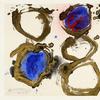



![Peter Paul Rubens (Flemish, 1577–1640), After Titian (Tiziano Vecelli) (Italian [Venetian], c. 1488–1576), Rape of Europa, 1628–29. Oil on canvas, 71 7/8 x 79 3/8 in. Peter Paul Rubens (Flemish, 1577–1640), After Titian (Tiziano Vecelli) (Italian [Venetian], c. 1488–1576), Rape of Europa, 1628–29. Oil on canvas, 71 7/8 x 79 3/8 in.](/images/c/e2/2e/Jan20_Rape_of_Europa100x100_c.jpg)
